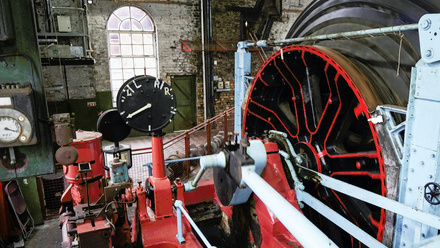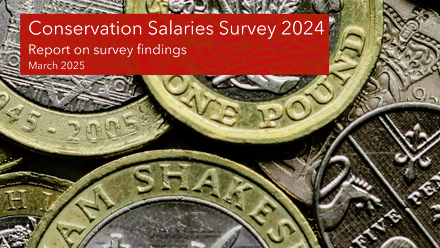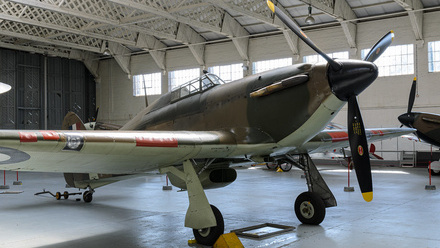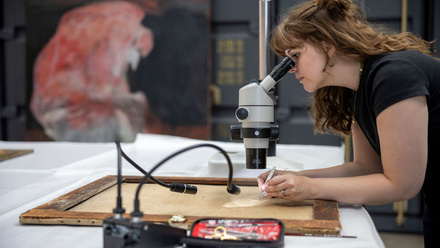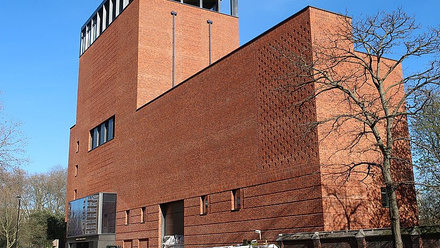A cathedral conservation course goes online
Frances Cambrook of the Cathedrals’ Workshop Fellowship (CWF), along with Heather Newton ACR and Karen Powell

How it started…
In March 2020, thirteen craftspeople from eight CWF cathedrals and two commercial conservation building companies were partway through the first year of their two-year work-based Foundation degree (Fd) programme in Applied Historic Building Conservation and Repair, which is validated by the University of Gloucestershire. The course was going well, the students had settled into the programme of study workshops and ‘gelled’ as a cohort. We were looking forward to delivering the Principles of Historic Building Conservation module at Lincoln Cathedral on 24th March. What could possibly go wrong? Answer – plenty!
A key USP of the CWF Fd is the ability to attend study workshops on block release at cathedrals all over the country, learning from experts, touring specific areas of the cathedrals and other historic sites and learning from spending time with each other. The approach takes advantage of the access we have to our own ten cathedrals and many other historic buildings and takes for granted that everyone is able to travel.
As lockdown put an end to travel plans and the prospect of months of disruption rather than weeks emerged, with the added complication of students and staff on furlough, the immediate future of the course looked bleak unless we could find a way to deliver remotely.
The question we had to ask ourselves was, could we replicate our experiential learning in the students’ homes via video conferencing software? There was only one way to find out! Supported by a generous grant from Historic England’s Emergency Response fund we began a journey of discovery into the world of online learning and assessment. This case study explains how we approached the online delivery and assessment of the conservation module, including theoretical and practical elements, and how the students and tutors responded to the experience.
How it went…
The conservation module is led by Heather Newton ACR, Head of Conservation at Canterbury Cathedral. She would normally travel to Lincoln prior to the module to plan the delivery alongside the Lincoln staff. The pandemic having removed the luxury of face-to-face meetings instead we held a series of Zoom planning meetings which had the added benefit of enabling the tutor team to get familiar with our chosen platform: Zoom.
Working through the curriculum and the normal approach to addressing each element we first of all separated the essential from the desirable and spent some time as a teaching team coming to terms with the fact that we would need to limit ourselves to what was essential to meet the learning outcomes of the module. Then we marshalled our resources, human and technical, and devised a plan.
The conservation module would normally involve:
- study workshops at two cathedrals, Lincoln and Winchester
- traditional lecture-style teaching
- live discussions and demonstrations on-site with experts
- visiting speakers
- one individual written assignment and one practical group assignment
The Lincoln Study Workshop is where the majority of the module content is delivered, against a backdrop of a busy Works Department with ongoing conservation and repair projects which students want to see. Every workshop also includes a more general cathedral tour, to introduce everyone to the location and orient themselves in the space. We decided we would need a video cathedral tour which could provide both the orientation and the insight into current works and Michael Sheppard ACR, Director of Works and Property at Lincoln Cathedral, agreed to make this.
We usually have a number of expert guest speakers; we approached those who had been due to contribute to the Workshop in March and asked if they would consider creating recorded presentations which could be shown to students and then to join the live sessions for discussion and questions. All of them agreed, despite this being early days for many people in getting to grips with MS Teams and Zoom presentations and not the way any of them were used to working.
Colleagues at York Minster also normally give the students a lime demonstration, so once again we commissioned a video demonstration which could be shown to the students at the Workshop. This would also be followed by a discussion and questions.
Drawing on rapidly emerging ‘best-practice’ in remote learning techniques, a timetable for the Workshop started to emerge. Module resources needed to be re-created in a different way. To accommodate optimum teaching and learning, and avoid ‘Zoom fatigue’, presentations needed to be short with plenty of interactive opportunities built in. There needed to be a mix of live and pre-recorded material as well as plenty of time for online reflection and the opportunity for extensive Q&A. Preparation is also key to successful online learning, so we needed to provide preliminary reading to ensure that students were familiar with the topics to be covered.
The module was delivered across two online workshops in Autumn 2020. All of the usual elements of the module were replicated online, assessments were completed, and, importantly, all of the students passed the module.
Material created for this module included:
- 7 Pre-recorded presentations
- 2 Pre-recorded tours
- 4 pre-recorded demonstrations of hot lime and lime putty mixing
- 1 pre-recorded tour of parts of Winchester
- Online resource folders containing images, documents and document links, relating to group assessment
All of the online sessions were designed to be followed by live Q&A with the speakers and tutors.
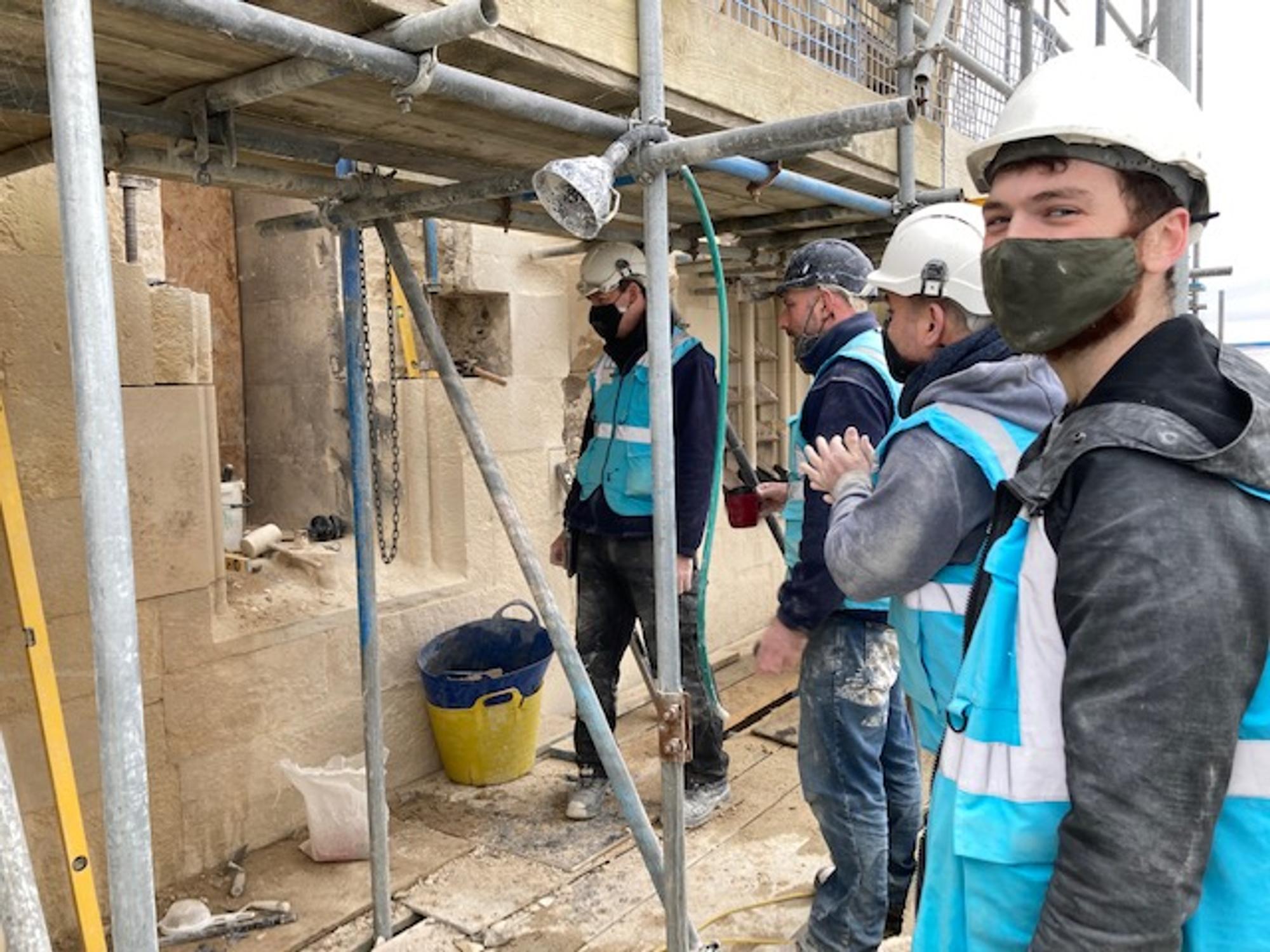
Senior Mason John Crump on site with masons Tony Nothard and apprentice mason Niall Horsefall-Turner, who is currently enrolled at the BCC and hopes to enrol on the CWF course next year.
The ‘Virtual Lincoln’ study workshop
Heather Newton introduced the module with a Pecha Kucha presentation to introduce the modern conservation history movement This short highly visual format works well online and the students returned to watch this in their own time using the links uploaded onto the Learning Hub.
In place of the cathedral tour, Michael Sheppard created two tours of the cathedral showing conservation programmes there and focusing on approaches to project management. Although these, and all other tours which were pre-recorded for other modules, took a lot of time to produce, they have been strongly welcomed by the students who would normally visit these cathedrals and learn about them in situ. They cannot replace the actual visit, but they are now available for the students to watch whenever required.
Historic buildings consultant David Watt gave presentations on building pathology and timber decay, Jane Cowan ACR, Head of Conservation at Lincoln Cathedral , narrated a presentation on Conservation report writing and conservation consultants David Odgers ACR and Jamie Fairchild gave three inter-linked presentations on cleaning techniques. There were four lime theory and practical mortar mixing demonstrations provided by Lee Godfrey and colleagues from York Minster team. These enabled a review of the long mixing process to be viewed in minutes rather than days!
A lot of time was spent before this workshop offering assistance to the tutors and guest speakers who had not created pre-recorded presentations before. Editing and formatting the content for the students’ use also required a significant investment of time.
The live Q&A sessions after each of the presentations and demonstrations helped to replicate the classroom environment and bring people back together as a group. This opportunity for the students to talk to leading experts in their field is a much-valued element of the course and the online environment seemed not to detract from this experience – if anything, with no trains to catch, the sessions tended to last longer than usual!
The ‘Virtual Winchester’ assessment workshop
The second workshop, in ‘virtual Winchester’ presented a different challenge altogether.
The students normally undertake a live group assessment exercise, whereby they are shown a previously unknown area of fabric, provided with key background information, and then asked to investigate the area physically and through documentary research to arrive at a diagnosis of the area’s conservation issues and make recommendations for treatment.
We decided to try to use technology to replicate this scenario as closely as possible. Even accepting the limitations this would impose it was felt that this would be preferable to replacing the assessment with a completely desk-based exercise.
Once again, we were very fortunate to receive enthusiastic support from external speakers including John Crook, Cathedral Architect, and David Rymill, Cathedral Archivist. Together with CWF graduate Pourang Tajally, a stonemason from Winchester, the speakers managed to bring the site to life and provide the students with the next best thing to being able to carry out the live exercise.
Pourang made a video recording of his usual introduction to the exercise and once the students had watched this John Crook and David Rymill joined the session with Pourang and Heather for an extensive Q&A session.
Students were then assigned to their groups and moved to Zoom Breakout Rooms, where they could work together as a team on the various aspects of the task. Tutors could ‘visit’ students in the breakout rooms to monitor progress and answer questions, but mainly the students worked independently in much the same way as they would have done had they been on site. The key difference, of course, was that they could not ‘get up close’ to the fabric they were evaluating, so in response to requests from students Pourang took additional photos which were uploaded onto the Learning Hub during the Workshop. Students were also able to watch the background video as many times as they liked (it has actually been viewed more than seventy times now!) and zoom in on images to get a closer look.
Links to relevant documentary sources were compiled and uploaded to the students’ Learning Hub and whilst they didn’t have the experience, and pleasure, of searching the archives themselves they were able to decide amongst themselves which sources were most useful and how the group would utilise the information.
The assessment itself is usually carried out as a ‘presentation of findings’ live on site. Each group decides how to do this, the only requirement being that every student must contribute to the presentation in some way. Normally students have a morning to finalise and practice their presentations; this was done in the same way using Zoom breakout rooms. The presentations were then delivered online, with screen sharing as required and each student taking their turn to present their section. Assessors were able to ask questions in the usual way.
The process went remarkably well considering none of us had ever attempted anything like this before. The technology worked, everyone participated, and the assessors were satisfied that they had been able to obtain all the information they needed to complete the assessment. Most importantly, all the students passed! Whilst the online experience could not fully replace the actual experience the extensive input by all of the CWF team, especially those at Winchester, created a satisfactory digital experience.
The story continues in the June issue of Icon News where you can find an article that addresses the wider issues of the online approach to conservation learning and reflects on the lessons learned.
Short clips of some of the presentations and demonstrations are available at:
- Jamie Fairchild and David Odgers on Cleaning Techniques
- David Watt on Building Pathology and Timber Decay (includes Q & A)
- Lime Putty and Lime Mortar demonstrations
A compilation of short clips from one of the student group assessments is available here.
With acknowledgement to CWF and Historic England.
References
Nordmann E, Horlin C, Hutchison J, Murray J-A, Robson L, Seery MK, and MacKay JRD. 2020. 10 simple rules for supporting a temporary online pivot in higher education. PsyArXiv Preprints https://psyarxiv.com/qdh25
Brown, S. Question of the Week - Online replacements for traditional lectures. Extracted from blog by Sally Brown at https://sally-brown.net/ 1/6/20

